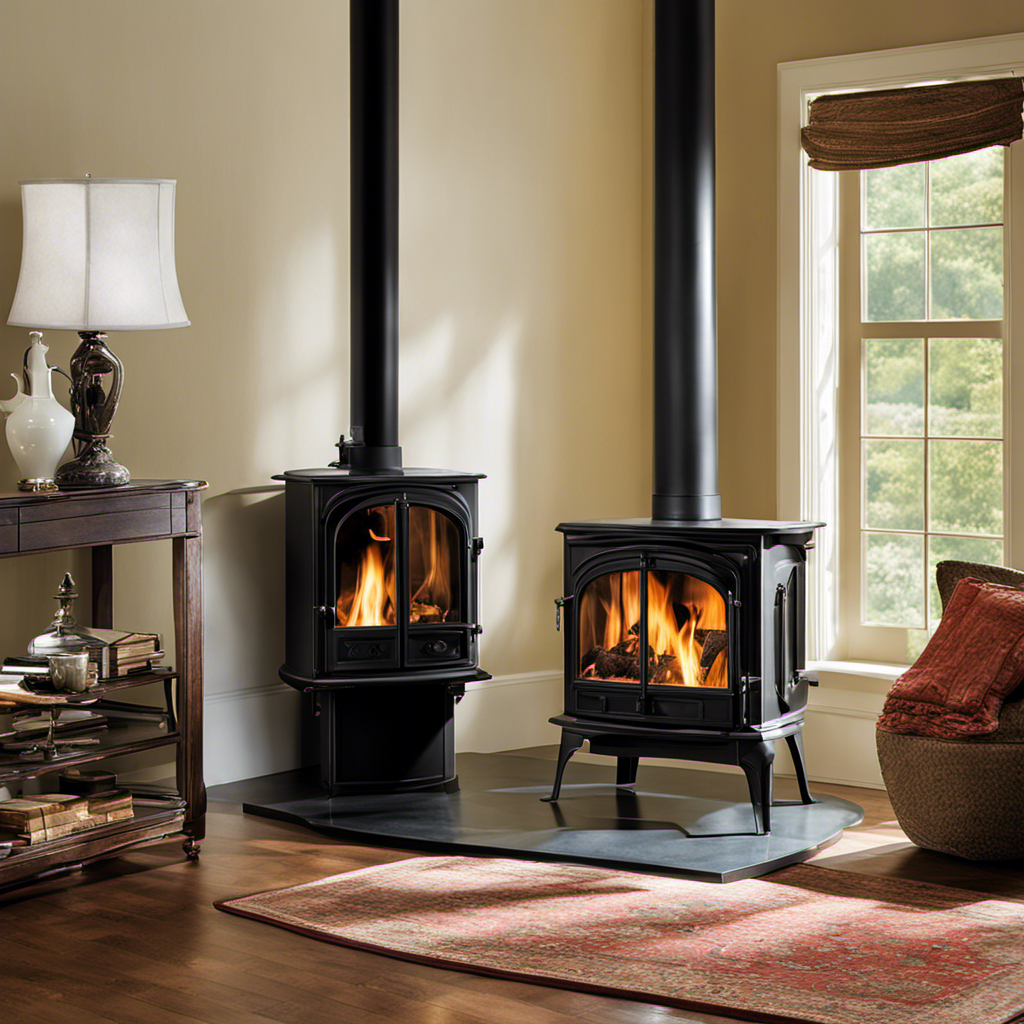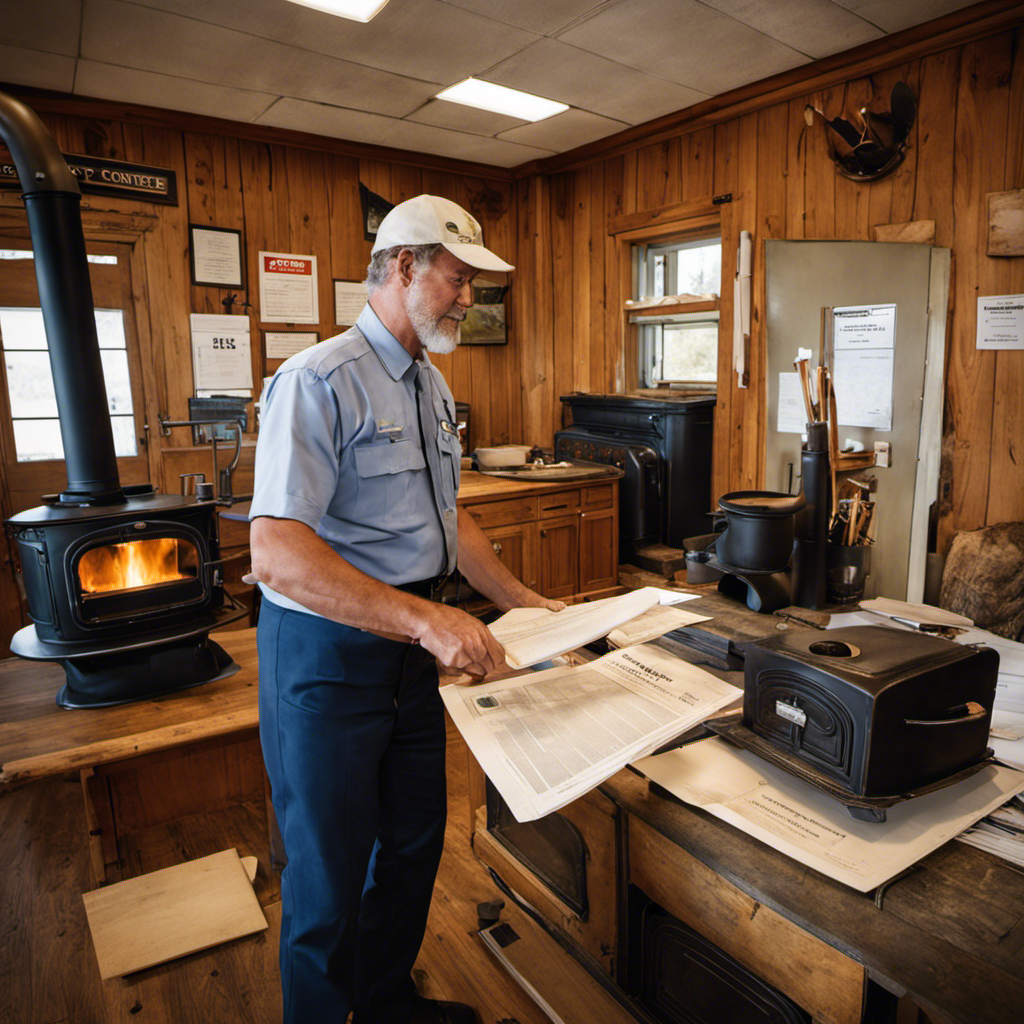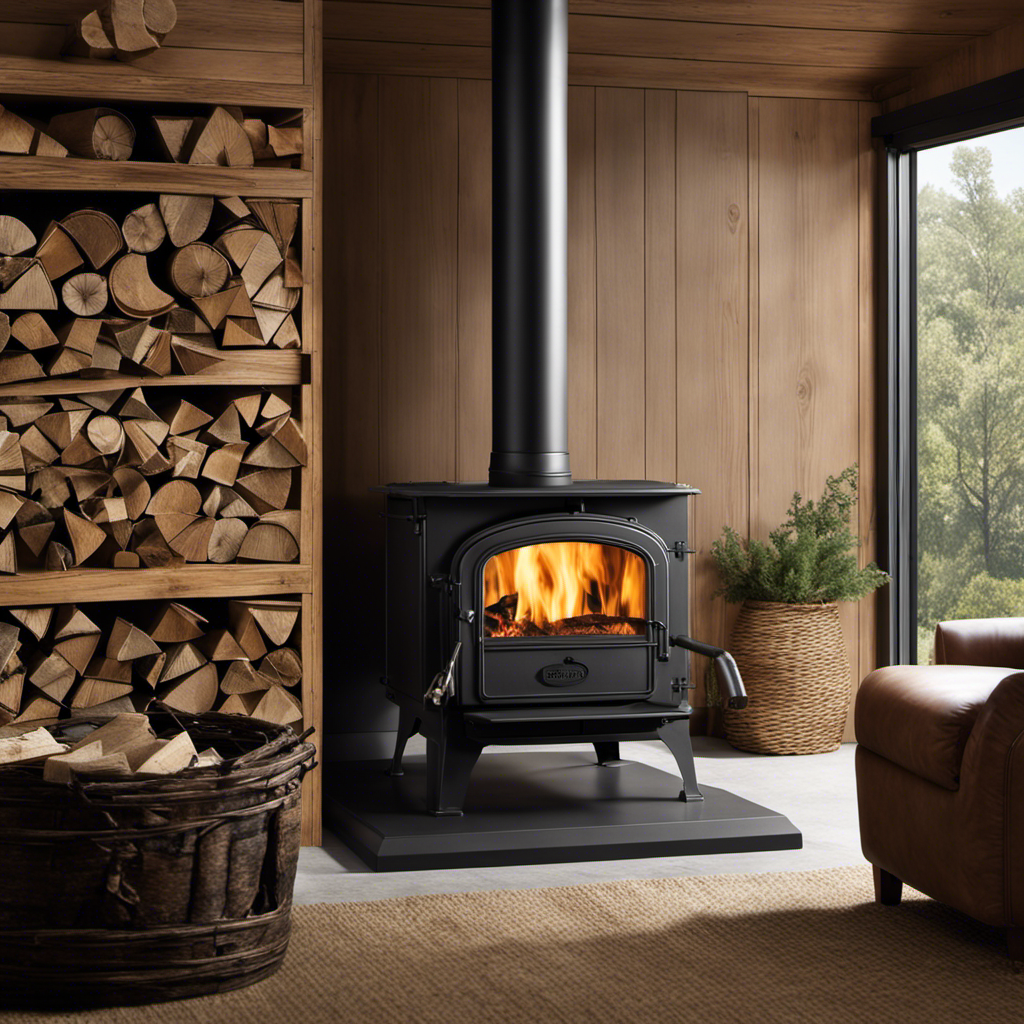Wood Stove
What Causes Black Soot On Ceilings From Wood Stove


As an individual who owns property and uses a wood stove, I was perplexed to notice the appearance of black soot on my ceilings. This spurred my interest, leading me to investigate the root causes of this phenomenon deeply. Through extensive research and carrying out multiple experiments, I discovered that a multitude of factors plays a role in the formation of black soot. Factors such as the efficiency of combustion, the moisture content in the wood, the type and quality of the wood being used, and the adequacy of airflow and ventilation all contribute to this issue.
Join me as I unravel the mysteries behind this issue and explore the importance of regular maintenance and cleaning to prevent it.
Key Takeaways
- Incomplete combustion in wood stoves leads to the formation of black soot on ceilings.
- Factors like poor air intake, improper fuel-to-air ratio, and inadequate mixing contribute to incomplete combustion.
- High moisture content in wood leads to inefficient combustion and the production of carbon monoxide and soot.
- Using well-seasoned wood with low moisture content and proper insulation can minimize soot production and reduce black soot on ceilings.
The Role of Incomplete Combustion
I can’t ignore the role of incomplete combustion in causing black soot on ceilings from a wood stove. When wood is burned, it undergoes a chemical reaction known as combustion.
In an ideal scenario, complete combustion occurs, where the wood is fully oxidized and converted into carbon dioxide and water vapor. However, when combustion is incomplete, there’s insufficient oxygen available for the reaction to proceed fully.
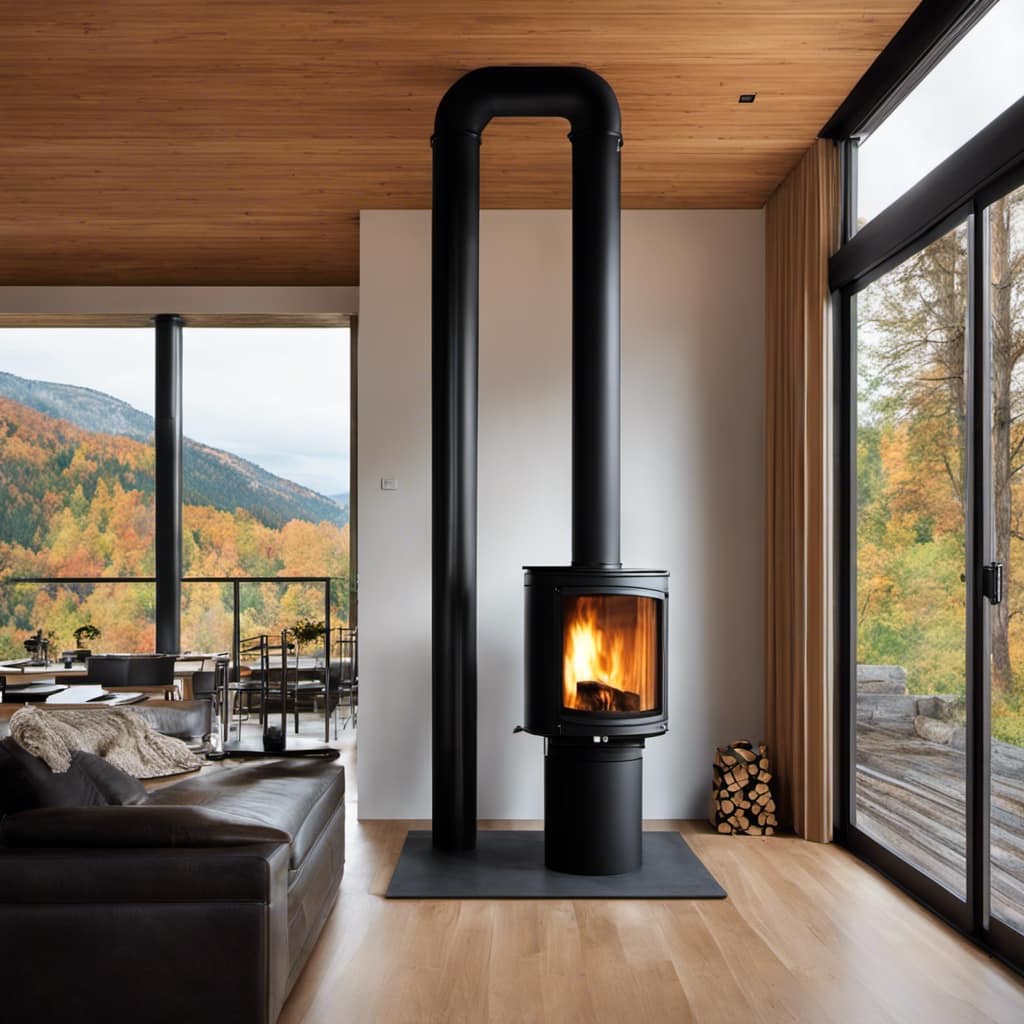
This leads to the formation of black soot, also known as carbon particulates. Inefficient combustion can be caused by factors such as poor air intake, improper fuel-to-air ratio, or insufficient mixing of fuel and air.
Not only does incomplete combustion result in the unsightly black soot on ceilings, but it also has negative environmental impacts. It releases harmful pollutants into the air, such as carbon monoxide and volatile organic compounds, contributing to air pollution and potential health risks.
Therefore, it’s crucial to ensure combustion efficiency in wood stoves to minimize the production of black soot and reduce the environmental impact.
Understanding the Impact of Moisture Content
Understanding the impact of moisture content is crucial in determining the efficiency of combustion in wood stoves. The condensation effects and humidity influence play significant roles in the combustion process. When wood with high moisture content is burned, the heat energy is used to evaporate the water instead of being utilized for combustion. This results in lower temperatures and incomplete combustion, leading to the production of pollutants such as carbon monoxide and soot.

Additionally, the presence of moisture can cause condensation in the flue, which further hampers the efficiency of the stove. Therefore, it’s essential to ensure that the wood used in wood stoves has a moisture content of around 20% or less to achieve efficient and clean combustion.
Transitioning to the significance of wood type and quality, we must consider their influence on combustion efficiency.
The Significance of Wood Type and Quality
Having a high-quality wood type is essential, as it can greatly impact the efficiency of combustion in wood stoves. Wood species selection plays a crucial role in determining the combustion efficiency and overall performance of a wood stove.
Different wood species have varying densities, moisture content, and chemical compositions, which directly affect the combustion process. For optimal combustion efficiency, it’s important to choose a wood species that has a high energy content and low moisture content.
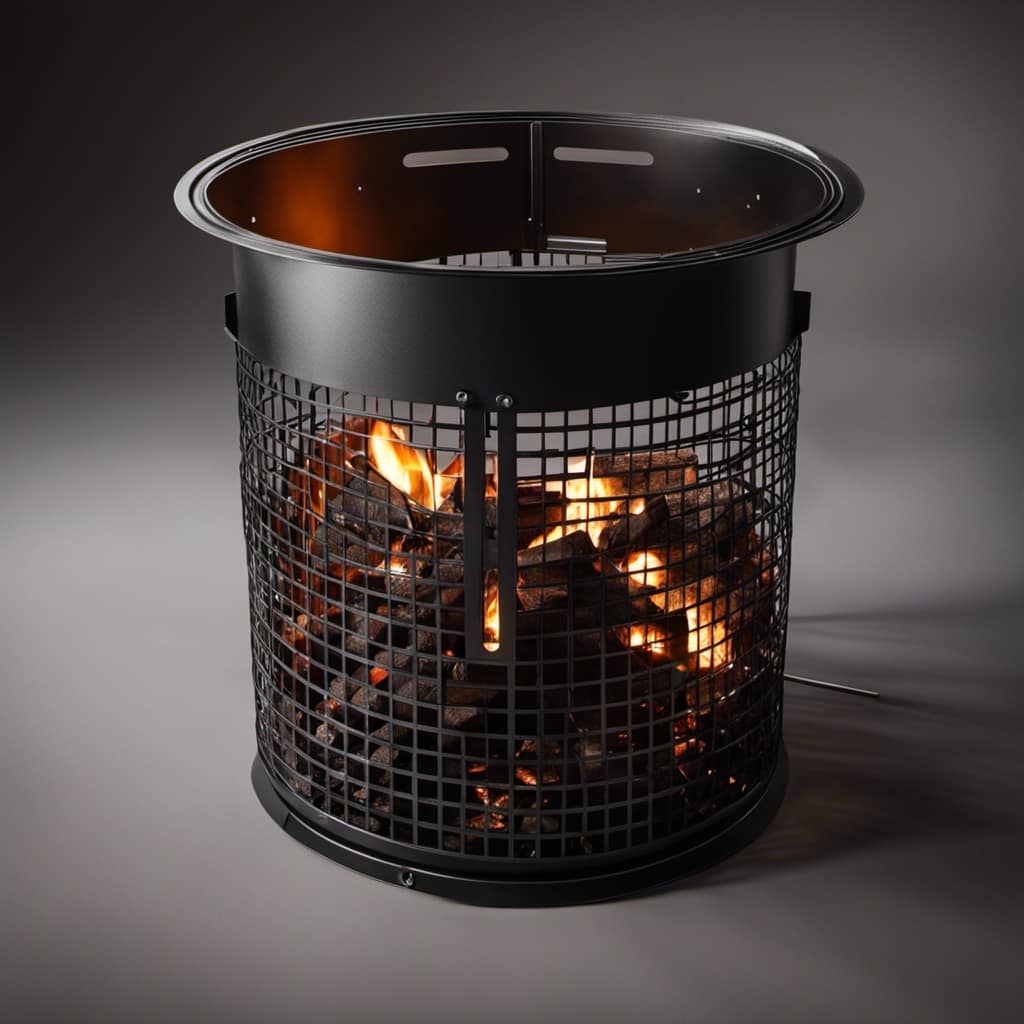
Hardwoods such as oak, maple, and birch are excellent choices as they’ve a higher energy content and burn longer compared to softwoods like pine or fir. Additionally, using well-seasoned wood with a moisture content below 20% ensures efficient combustion and minimizes the production of harmful byproducts such as soot and creosote.
Proper wood species selection and moisture content management are essential for achieving optimal combustion efficiency in wood stoves.
How Airflow and Ventilation Contribute to Soot Formation
The airflow and ventilation in a wood stove play a significant role in the formation of black soot on ceilings. Proper insulation ensures efficient combustion, which in turn reduces the production of soot. Insulation plays a crucial role in reducing heat loss and maintaining a consistent temperature inside the wood stove. On the other hand, poor insulation can lead to incomplete combustion and the formation of more soot.
Additionally, the effect of chimney height on soot dispersal shouldn’t be underestimated. A taller chimney allows for better draft and improved airflow, which helps carry the soot particles up and away from the stove, preventing them from settling on the ceilings.

Therefore, proper insulation and chimney height are key factors in minimizing the formation and accumulation of black soot on ceilings.
The Importance of Regular Maintenance and Cleaning
I make sure to prioritize regular maintenance and cleaning of my wood stove to prevent the build-up of black soot on my ceilings. Effective cleaning techniques play a crucial role in keeping the stove and chimney free from soot deposits.
Firstly, I always ensure to remove the ashes and debris from the stove, as this will help in maintaining proper airflow.
Secondly, I use a chimney brush to clean the flue regularly, as it helps to remove any creosote or soot buildup.

Additionally, preventive measures against soot buildup include burning dry and seasoned wood, as wet or unseasoned wood tends to produce more soot.
Also, I keep an eye on the stove’s air vents and make sure they’re clean and unobstructed for optimal combustion.
Regular maintenance and effective cleaning techniques are essential for keeping my wood stove clean and preventing the accumulation of black soot on my ceilings.
Frequently Asked Questions
How Can I Prevent Black Soot From Forming on My Ceilings?
To prevent black soot on ceilings, I recommend taking preventive measures like using properly seasoned firewood, maintaining adequate airflow, and ensuring a clean flue. Regular cleaning techniques such as dusting and wiping the ceiling can also help.
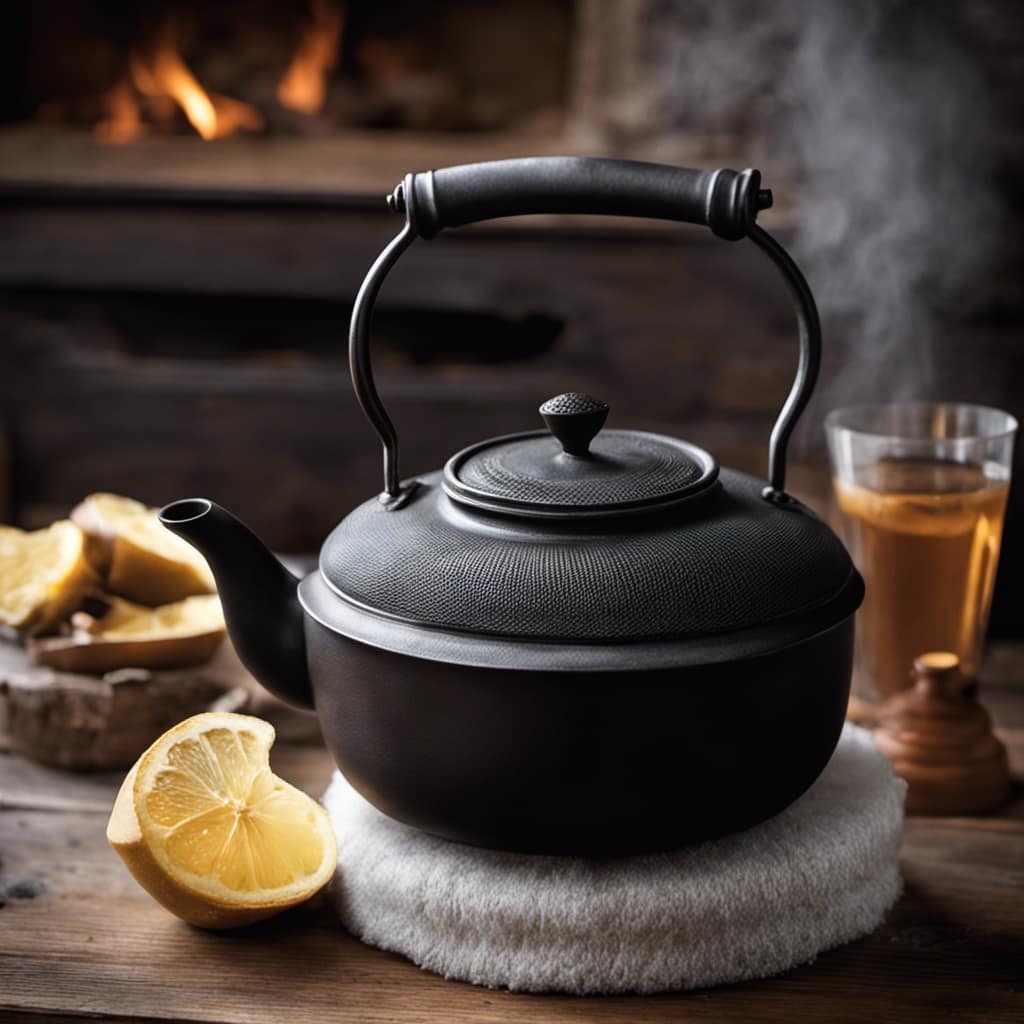
What Are the Potential Health Risks Associated With Black Soot From a Wood Stove?
Potential health risks associated with black soot from a wood stove include respiratory issues, eye irritation, and increased risk of cardiovascular problems. Regular cleaning methods, such as using a damp cloth or vacuuming, can help reduce these risks.
Can the Type of Wood I Burn in My Wood Stove Affect the Amount of Black Soot Produced?
The type of wood I burn in my wood stove can affect the amount of black soot produced. The moisture content of the wood and the temperature of the stove both play a role in black soot formation.
Are There Any Specific Cleaning Methods or Products That Work Best for Removing Black Soot From Ceilings?
Cleaning methods and effective products are essential for removing black soot from ceilings. I can provide detailed knowledge and recommendations on the best approaches, ensuring effective removal and preventing future buildup.
Is There a Way to Reduce or Eliminate Black Soot Formation Without Compromising the Efficiency of My Wood Stove?
Reducing black soot formation while maintaining wood stove efficiency is possible. Regularly cleaning the stovepipe and chimney, using dry seasoned wood, and adjusting the air intake can help minimize soot buildup.

Conclusion
In conclusion, the black soot on ceilings from wood stoves is caused by a combination of factors. Incomplete combustion, high moisture content in the wood, and poor wood quality all contribute to the formation of soot. Additionally, inadequate airflow and ventilation can further exacerbate the problem.
To prevent the accumulation of soot, regular maintenance and cleaning of the wood stove are essential. By addressing these factors, you can ensure a clean and efficient wood stove that will keep your home warm and cozy.
Growing up surrounded by the vast beauty of nature, Sierra was always drawn to the call of the wild. While others sought the comfort of the familiar, she ventured out, embracing the unpredictable and finding stories in the heartbeat of nature.
At the epicenter of every remarkable venture lies a dynamic team—a fusion of diverse talents, visions, and passions. The essence of Best Small Wood Stoves is crafted and refined by such a trio: Sierra, Logan, and Terra. Their collective expertise has transformed the platform into a leading authority on small wood stoves, radiating warmth and knowledge in equal measure.
Wood Stove
Why Doesn’T My Wood Stove Smell
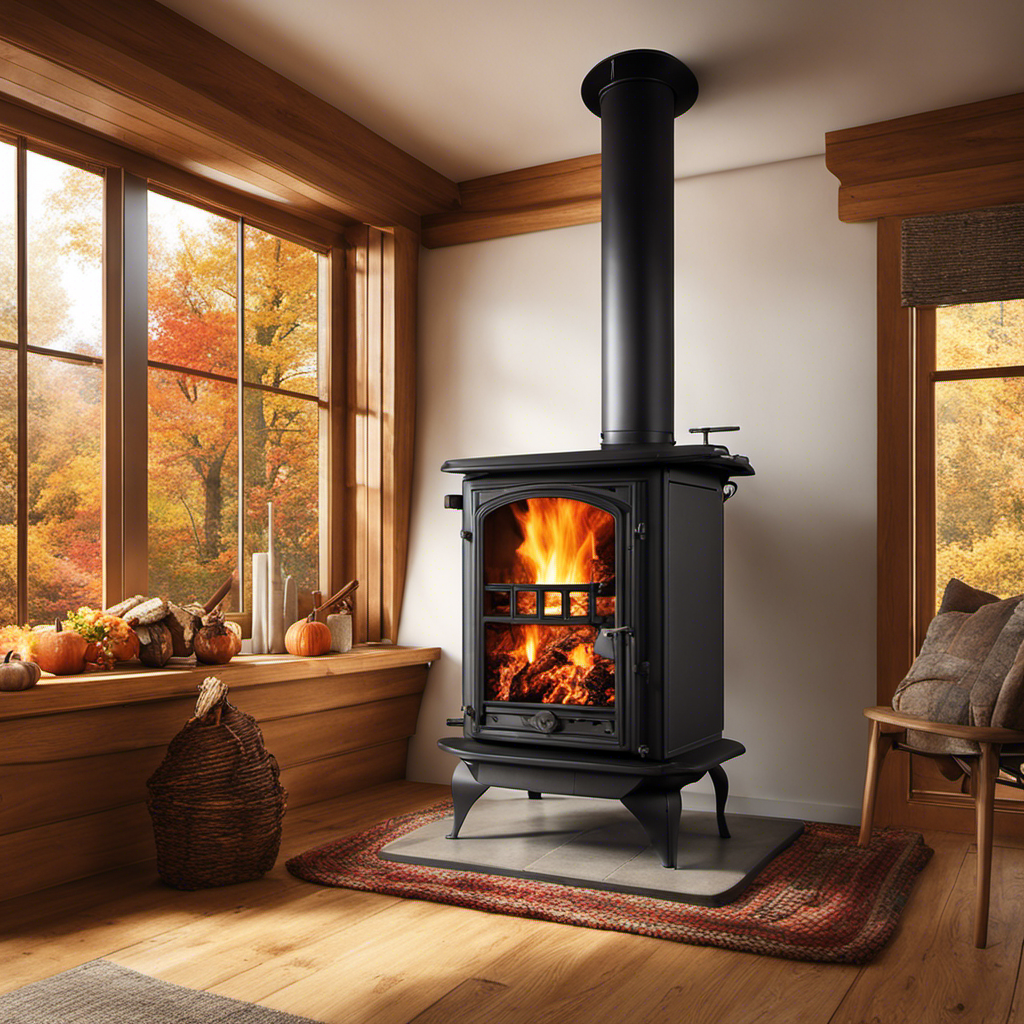
As an expert in operating wood stoves, let me shed some light on this issue for you. If you’re worried because you’re missing that unique scent from your wood stove, don’t worry. I have the solutions you’re looking for.
In this article, we’ll explore the possible causes behind an odorless wood stove, from ventilation issues to fuel selection.
I’ll also share some expert tips to enhance the delightful scent of your wood stove.
So, sit back, relax, and let’s uncover the secrets to a fragrant wood stove experience.
Key Takeaways
- Incorrect fuel or wood selection can cause a wood stove to not produce any smell.
- Lack of proper airflow and ventilation can also result in an odorless wood stove.
- Worn-out seals and gaskets can contribute to the lack of smell from a wood stove.
- Neglecting cleaning and maintenance can prevent the wood stove from emitting any odor.
Possible Causes of a Odorless Wood Stove
I can’t figure out why my wood stove doesn’t smell, even after cleaning it thoroughly. As someone experienced in wood stove maintenance, I know that burning techniques and regular cleaning are key factors in preventing odors.
Firstly, it’s important to use the right type of firewood. Hardwoods like oak or maple burn cleaner and produce less smoke and odor than softwoods. Also, properly seasoning the firewood is crucial. Moisture content should be around 20% for efficient burning and minimal smoke.
Secondly, cleaning the wood stove regularly is essential. Ashes and creosote buildup can contribute to unpleasant smells. By removing ashes and cleaning the chimney regularly, you can ensure proper airflow and prevent odors. Additionally, inspecting and maintaining the gasket seals can also help eliminate any potential sources of odor.
Lack of Proper Airflow and Ventilation
To prevent odors, it is important to regularly clean the wood stove, ensuring proper airflow and ventilation. Poor wood stove performance can be caused by a lack of proper airflow and ventilation. Regular maintenance is crucial in order to keep the wood stove functioning at its best. Neglecting maintenance can lead to a build-up of creosote, which can restrict airflow and cause a smoky smell. It is also important to check the seals and gaskets on the stove doors to ensure they are tight and not allowing any air to escape. A simple way to improve airflow is to open the damper fully when starting a fire and adjusting it as needed. By following these maintenance tips, you can prevent odors and ensure optimal performance from your wood stove.
| Causes of Poor Wood Stove Performance | Importance of Regular Maintenance |
|---|---|
| Lack of proper airflow and ventilation | Prevents build-up of creosote |
| Worn-out seals and gaskets | Ensures tight stove doors |
| Neglecting cleaning and maintenance | Promotes optimal performance |
| Improper damper usage | Prevents odors |
| Lack of chimney maintenance | Ensures safe and efficient use |
Incorrect Fuel or Wood Selection
Sometimes, using the wrong type of fuel or wood can lead to poor performance in your wood stove. It’s important to understand the impact of wood moisture and combustion efficiency in order to optimize the functioning of your stove. Here are a few key points to consider:
-
Wood Moisture: Wet or green wood contains a high moisture content, which makes it difficult to burn efficiently. This can result in incomplete combustion, increased smoke production, and reduced heat output. It’s best to use seasoned firewood with a moisture content below 20% for optimal performance.
-
Combustion Efficiency: The efficiency of wood combustion depends on factors such as air supply, wood density, and stove design. Properly seasoned firewood and a well-maintained stove can enhance combustion efficiency, resulting in cleaner burning, increased heat output, and reduced emissions.
-
Fuel Selection: Choosing the right type of wood is crucial for maximizing stove performance. Hardwoods like oak, maple, and birch are dense and burn longer, providing more heat. Softwoods like pine and spruce burn faster but produce less heat. It’s also important to avoid treated or painted wood, as they can release toxic fumes when burned.
-
Stove Maintenance: Regularly cleaning and inspecting your wood stove is essential for optimal performance. Ensure that the air vents are clear and the firebox is free from ash buildup. This allows for proper airflow and efficient combustion.
Issues With the Chimney or Flue System
How often should I have my chimney or flue system inspected and cleaned, and what are the consequences of neglecting this maintenance? As an experienced chimney sweep, I recommend having your chimney or flue system inspected and cleaned at least once a year. Neglecting this maintenance can lead to serious consequences such as improper installation and maintenance problems. To emphasize the importance of regular maintenance, let’s take a look at the potential consequences:
| Neglected Maintenance | Consequences |
|---|---|
| Improper installation | Increased risk of chimney fires and carbon monoxide leaks |
| Lack of cleaning | Build-up of creosote, leading to chimney fires |
| Blocked flue system | Poor ventilation, decreased efficiency, and smoke backdraft |
| Damaged chimney structure | Structural instability and potential collapse |
Regular inspections and cleanings help prevent these issues, ensuring the safe and efficient operation of your wood stove. Now, let’s move on to some tips for enhancing the aroma of your wood stove.
Tips for Enhancing the Aroma of Your Wood Stove
I love using dried herbs and spices on my wood stove to create a cozy and aromatic atmosphere. Not only does it add a delightful fragrance to my home, but it also provides various aromatherapy benefits.
Here are some tips for enhancing the aroma of your wood stove:
-
Use dried lavender or chamomile: These calming herbs release a soothing scent that can help relax your mind and body.
-
Try citrus peels: The zesty aroma of citrus fruits like oranges and lemons can invigorate your space and uplift your mood.
-
Experiment with cinnamon sticks: The warm and spicy fragrance of cinnamon creates a comforting environment and can even help improve focus and concentration.
-
Explore essential oils: Adding a few drops of essential oils, such as eucalyptus or peppermint, to a dish of water on top of your wood stove can fill the air with refreshing and invigorating scents.
These home fragrance alternatives aren’t only natural but also cost-effective, allowing you to enjoy a beautifully scented space while embracing the benefits of aromatherapy.
Frequently Asked Questions
Can a Wood Stove Emit an Odor if There Is No Problem With the Airflow or Ventilation?
Yes, a wood stove can emit an odor even if there are no issues with airflow or ventilation. The absence of smell does not necessarily indicate better air quality, and it’s important to consider the environmental impact of a wood stove without any odor.
How Can I Determine if the Smell Coming From My Wood Stove Is Normal or a Sign of an Issue?
How can I determine if the smell from my wood stove is normal or a sign of an issue? By identifying any unusual or strong odors, checking for smoke or soot buildup, and ensuring proper ventilation, I can assess the situation.
Is It Possible for the Type of Wood or Fuel I Use in My Wood Stove to Affect the Smell?
Yes, the type of wood and fuel used in a wood stove can affect the smell. Wood quality and moisture content have an impact on the combustion process, which can result in different odors.
Can a Chimney or Flue System Problem Cause a Wood Stove to Not Emit Any Odor at All?
A wood stove not emitting any odor can be caused by issues in the chimney or flue system. To troubleshoot, check for blockages, ensure proper ventilation, and consider getting the system professionally inspected and cleaned.
Are There Any Potential Health Risks Associated With a Wood Stove That Doesn’t Produce Any Smell?
There can be potential health risks associated with a wood stove that doesn’t produce any smell. It could indicate incomplete combustion, leading to increased carbon monoxide levels. Regular maintenance and proper ventilation are crucial to ensure safety.
Conclusion
After exploring the possible causes of a odorless wood stove, it’s clear that proper airflow and ventilation play a crucial role in preventing any unpleasant smells.
Additionally, selecting the right fuel and ensuring the chimney and flue system are in good condition can greatly enhance the overall aroma.
By following these tips, you can create a cozy and inviting atmosphere in your home, making your wood stove experience truly delightful.
Logan’s affair with adventure began in childhood. He hailed from a small town where vast forests bordered one side and endless shores stretched on the other. His days were spent exploring uncharted woods, climbing tall trees, or listening to the tales of old sailors. This early immersion in a world brimming with stories and mysteries became the foundation of his passion for writing.
Wood Stove
How Tall Should The Stove Pipe Be On A Outdoor Wood Stove
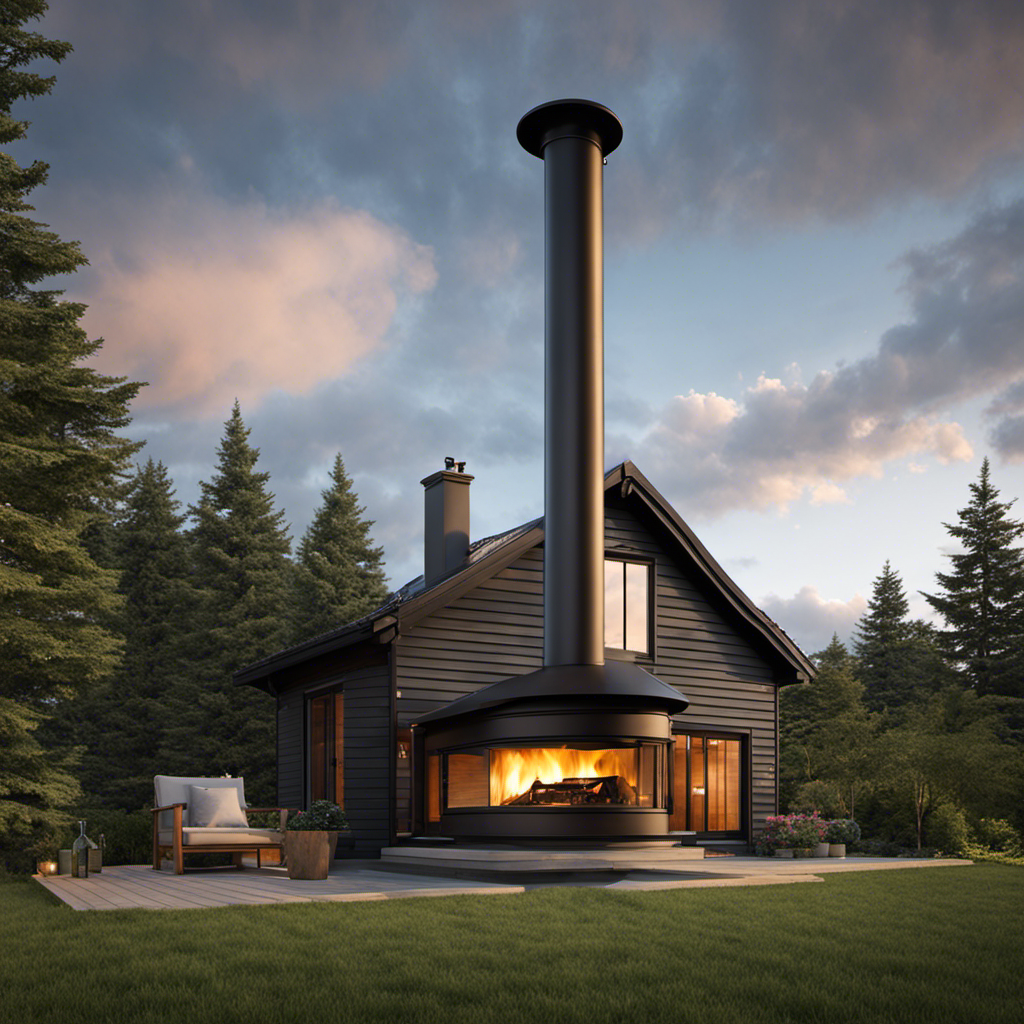
Standing next to my outdoor wood stove, I found myself contemplating the perfect elevation for the stove pipe. Questions flooded my thoughts: What is the optimal height? How does this height influence the efficiency of the stove?
In this article, I will delve into the technical aspects of determining the stove pipe height. We’ll explore the factors to consider, guidelines for calculating the ideal height, and common mistakes to avoid.
Join me on this informative journey to ensure your stove pipe is at the perfect height.
Key Takeaways
- Factors to consider when determining the stove pipe height include distance from combustible materials, chimney draft, fire hazard prevention, and optimal combustion.
- Proper stove pipe length is important for benefits such as using a chimney cap, different materials for construction, durability of stainless steel, and double-wall insulation for heat retention.
- Guidelines for calculating the ideal stove pipe height include considering the stove’s location, pipe length, and distance to the roof/chimney, consulting manufacturer’s guidelines, and maximizing efficiency through accurate calculation.
- Common mistakes to avoid when installing the stove pipe include not securing the pipe tightly with brackets, improper alignment of sections, using low-quality materials, and not following manufacturer’s guidelines.
Factors to Consider When Determining the Stove Pipe Height
When determining the stove pipe height, I need to consider factors such as the distance from combustible materials and the draft of the chimney. These factors are crucial in ensuring the safe and efficient operation of the outdoor wood stove.
First, the distance from combustible materials is important because it helps prevent any potential fire hazards. The stove pipe should be positioned a safe distance away from any flammable objects to reduce the risk of ignition.
Second, the draft of the chimney plays a significant role in the stove’s performance. The height of the stove pipe affects the draft, which is the flow of air through the chimney. A proper draft is essential for optimal combustion and efficient heat transfer.
Understanding these factors is vital in determining the appropriate height for the stove pipe and ensuring the overall safety and effectiveness of the outdoor wood stove.
Now, let’s delve into the importance of proper stove pipe length.
Understanding the Importance of Proper Stove Pipe Length
I currently understand the importance of having the proper stove pipe length for my outdoor wood stove. When it comes to the performance of my stove, the length of the stove pipe plays a crucial role.
One of the benefits of using a chimney cap on an outdoor wood stove is that it prevents rain, debris, and animals from entering the stove pipe. This helps to maintain the efficiency and longevity of the stove.
Additionally, exploring different materials for stove pipe construction is essential. Stainless steel is a popular choice due to its durability, resistance to corrosion, and high temperature resistance. However, some may opt for double-wall insulated pipes for better heat retention and improved safety.
It’s vital to choose the right stove pipe length and material to ensure optimal performance and safety of the outdoor wood stove.
Guidelines for Calculating the Ideal Stove Pipe Height
After researching the guidelines, I’ve learned that calculating the ideal stove pipe height is crucial for proper ventilation and efficient operation of the outdoor wood stove. The height of the stove pipe affects the draft and airflow, which in turn affects the combustion process and heat output.
To calculate the ideal height, one must consider factors such as the stove’s location, the length of the pipe, and the distance from the stove to the roof or chimney. A general rule of thumb is to have a minimum height of 10-12 feet above the stove, with an additional 3 feet for every 10 feet of horizontal pipe.
However, it’s important to consult the manufacturer’s guidelines for specific recommendations based on the model of the outdoor wood stove. By accurately calculating the stove pipe height, one can ensure proper ventilation and maximize the efficiency of their outdoor wood stove.
Common Mistakes to Avoid When Installing the Stove Pipe
One of the most common mistakes I made when installing the stove pipe was forgetting to secure it tightly against the wall with brackets. This is a crucial step in ensuring the stability and safety of the stove pipe installation.
Brackets play a significant role in keeping the stove pipe securely attached to the wall, preventing it from moving or falling.
Another common mistake isn’t properly aligning the sections of the stove pipe. It’s important to ensure that each section fits snugly into the next, creating a seamless connection.
Additionally, it’s essential to remember to use high-quality stove pipe materials and follow the manufacturer’s guidelines for installation.
These common mistakes can easily be avoided by taking the time to properly secure the stove pipe with brackets and ensuring a proper alignment of the sections.
Tips for Maintaining and Adjusting the Stove Pipe Height
Maintaining and adjusting the height of the stove pipe is crucial for the proper functioning and efficiency of the outdoor wood stove. Here are four important tips to keep in mind:
-
Optimal Draft: Ensuring the stove pipe is at the correct height helps create the right amount of draft, allowing the wood stove to burn efficiently. A properly drafted stove pipe promotes effective combustion and prevents smoke from entering the living space.
-
Cleaning Efficiency: By maintaining the appropriate height, you can easily access and clean the stove pipe. Regular cleaning removes creosote buildup, reducing the risk of chimney fires. It’s recommended to clean the stove pipe at least once a year to maintain optimum performance.
-
Ventilation Advantages: Properly adjusting the stove pipe height enables proper ventilation, ensuring the wood stove receives adequate air supply. This enhances the combustion process, resulting in improved heat output and fuel efficiency.
-
Safety Precautions: Correctly maintaining and adjusting the stove pipe height minimizes the risk of carbon monoxide poisoning. A well-functioning stove pipe effectively vents harmful gases outside, keeping your home safe and secure.
Frequently Asked Questions
What Are the Potential Dangers or Risks of Having a Stove Pipe That Is Too Short or Too Long?
Having a stove pipe that is too short can lead to the dangers of smoke and carbon monoxide entering the living space. On the other hand, a stove pipe that is too long can cause poor draft and inefficient burning.
Can I Use a Stove Pipe That Is Shorter Than the Recommended Height?
I wouldn’t recommend using a shorter stove pipe as it can lead to safety concerns. The recommended height ensures proper ventilation, preventing smoke and carbon monoxide buildup. It’s important to prioritize safety when using an outdoor wood stove.
How Do I Know if My Stove Pipe Is Properly Installed and Functioning Correctly?
To ensure proper installation and functioning of my stove pipe, I troubleshoot common problems by checking for leaks, obstructions, and proper clearances. I also maintain and clean it regularly to prevent creosote buildup and ensure efficient operation.
Are There Any Local Regulations or Codes That Dictate the Minimum or Maximum Height for a Stove Pipe?
Local regulations and codes dictate the minimum and maximum height for a stove pipe. It is important to consult these regulations to ensure compliance and proper installation of your outdoor wood stove.
Can I Extend the Height of My Existing Stove Pipe Without Having to Purchase a New One?
Yes, I can extend the height of my existing stove pipe without purchasing a new one. There are alternative stove pipe options available that can be used to increase the height as needed.
Conclusion
In conclusion, determining the height of the stove pipe for an outdoor wood stove is crucial for optimal performance and safety.
By considering factors such as chimney draft, wind conditions, and local building codes, you can calculate the ideal height for your stove pipe.
Avoid common mistakes during installation and regularly maintain and adjust the height as needed.
Remember, a properly sized stove pipe ensures efficient combustion and helps prevent the risk of smoke and fire hazards, providing peace of mind for a cozy and safe outdoor cooking experience.
Growing up surrounded by the vast beauty of nature, Sierra was always drawn to the call of the wild. While others sought the comfort of the familiar, she ventured out, embracing the unpredictable and finding stories in the heartbeat of nature.
At the epicenter of every remarkable venture lies a dynamic team—a fusion of diverse talents, visions, and passions. The essence of Best Small Wood Stoves is crafted and refined by such a trio: Sierra, Logan, and Terra. Their collective expertise has transformed the platform into a leading authority on small wood stoves, radiating warmth and knowledge in equal measure.
Wood Stove
What Does A Refractory Board On Wood Stove Do
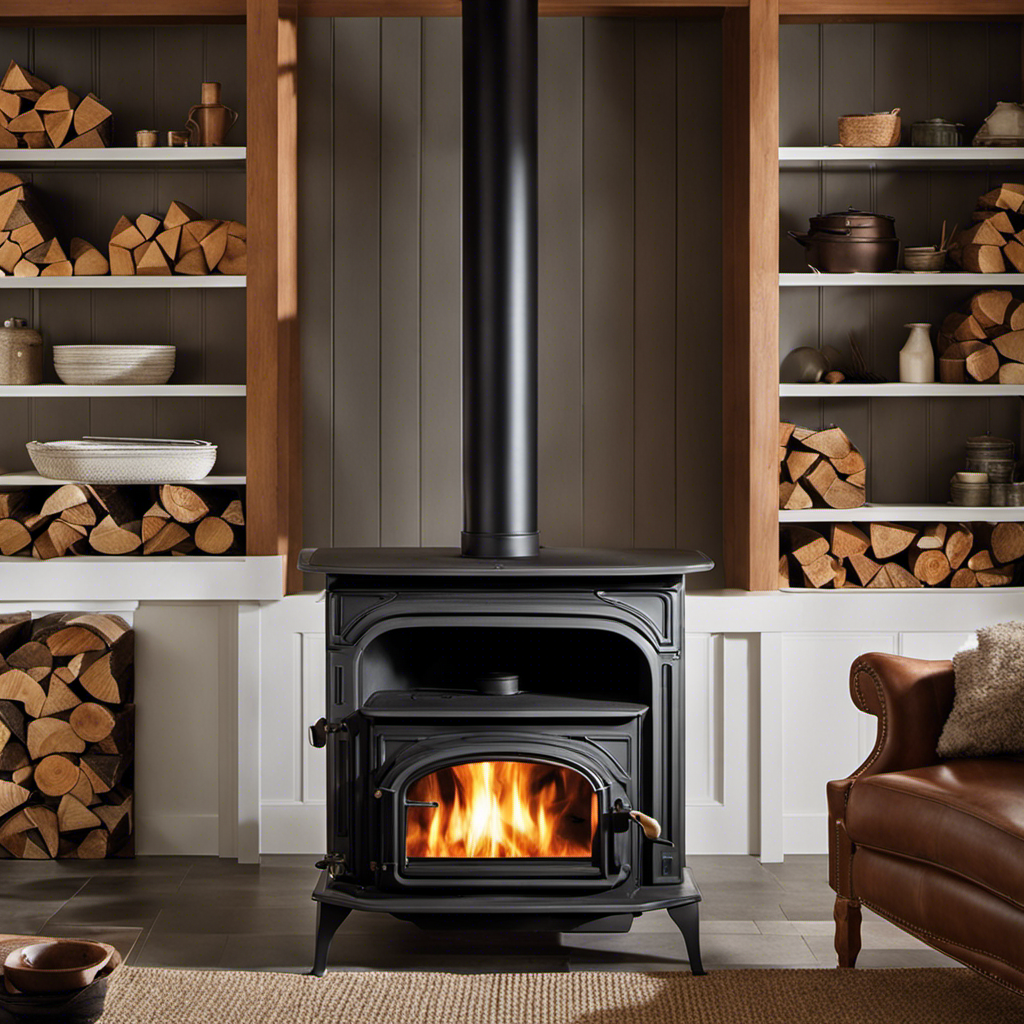
Were you aware that incorporating a refractory board into your wood stove can markedly enhance its efficiency? Indeed, it is true!
With its heat-resistant properties, a refractory board acts as a barrier, protecting your wood stove from extreme temperatures and preventing damage.
Not only does it enhance the heat efficiency of your stove, but it also ensures a longer lifespan.
In this article, I’ll delve into the benefits of a refractory board and provide helpful tips for choosing and maintaining the right one for your wood stove.
Key Takeaways
- Provides insulation and retains heat generated by the wood stove
- Acts as a thermal barrier, preventing heat escape and reducing energy wastage
- Regulates and maintains consistent temperature inside the stove
- Protects interior components, extending the lifespan of the wood stove
The Purpose of a Refractory Board
I learned that the main purpose of a refractory board is to provide at least two layers of insulation for the wood stove. The benefits of using a refractory board are numerous.
Firstly, it helps to retain the heat generated by the wood stove, ensuring that it’s efficiently utilized to warm the surrounding area. Additionally, the insulation provided by the refractory board helps to prevent the escape of heat, reducing energy wastage and ultimately saving on heating costs.
There are various types of refractory materials that can be used for wood stoves, including ceramic fiber boards, calcium silicate boards, and vermiculite boards. Each type has its own unique properties, such as high-temperature resistance and excellent heat retention, making them suitable for different applications.
Ultimately, the use of a refractory board in a wood stove greatly enhances its performance and efficiency.
How a Refractory Board Protects Your Wood Stove
During colder months, a refractory board acts as a barrier and protects your wood stove from excessive heat, ensuring its longevity. The insulating properties of the board help to prevent heat damage to the stove and surrounding areas. This is achieved by absorbing and distributing the intense heat generated by the burning wood, thereby reducing the risk of overheating and potential fire hazards. The refractory board also acts as a thermal barrier, preventing heat from escaping through the walls of the stove and increasing its overall efficiency. Additionally, the board helps to regulate the temperature inside the stove, allowing for more controlled and efficient burning of wood. Overall, the presence of a refractory board is crucial for maintaining the safety and performance of your wood stove.
| Benefits of a Refractory Board | How it Works |
|---|---|
| Insulating properties | Absorbs and distributes heat |
| Preventing heat damage | Acts as a thermal barrier |
| Increasing stove efficiency | Regulates temperature |
| Ensuring safety | Reduces risk of fire hazards |
Enhancing Heat Efficiency With a Refractory Board
Using a refractory board in your wood stove can significantly enhance heat efficiency and reduce energy waste. Here’s how it works:
-
Insulation: A refractory board acts as insulation, preventing heat from escaping through the walls of the stove and maximizing heat output inside the stove.
-
Heat Reflection: The board reflects heat back into the firebox, increasing energy savings by ensuring that more heat is utilized for heating the room instead of being lost.
-
Heat Distribution: It helps distribute heat evenly throughout the stove, ensuring that all areas of the stove are heated efficiently.
-
Temperature Regulation: The board helps in regulating and maintaining a consistent temperature inside the stove, optimizing energy usage and reducing fuel consumption.
-
Protection: It protects the interior components of the wood stove from extreme temperatures, extending the lifespan of the stove and reducing maintenance costs.
Choosing the Right Refractory Board for Your Wood Stove
When selecting a refractory board for my wood stove, it’s essential to consider factors such as durability, heat resistance, and ease of installation.
A refractory board plays a crucial role in enhancing the insulation benefits of a wood stove. It acts as a barrier, preventing heat from escaping and ensuring maximum heat efficiency. The insulation properties of the board help maintain a consistent and controlled temperature inside the stove, resulting in more efficient burning and reduced energy consumption.
In addition to insulation benefits, durability is a key factor to consider when choosing a refractory board. It should be able to withstand high temperatures without cracking or deteriorating over time.
Ease of installation is also important for a hassle-free setup. Taking these factors into account will ensure that you select a high-quality refractory board that meets your needs.
Now, let’s explore some maintenance tips for a long-lasting refractory board.
Maintenance Tips for a Long-lasting Refractory Board
I’ve found that by regularly inspecting and cleaning around the refractory board, as well as applying a protective sealant, I can ensure its long-lasting performance. The refractory board plays a crucial role in a wood stove, providing insulation and protecting the surrounding components from excess heat.
To maximize its longevity benefits, here are some cleaning techniques I recommend:
- Use a soft brush or vacuum to remove any dust or debris that may accumulate on the board.
- Wipe the board with a damp cloth to remove any stubborn dirt or stains.
- Avoid using abrasive cleaners or harsh chemicals that can damage the board’s surface.
- Apply a high-temperature sealant to protect the board from moisture and prevent cracks.
- Regularly check for any signs of wear or damage and address them promptly to prevent further issues.
Frequently Asked Questions
How Much Does a Refractory Board Cost?
Refractory boards have various applications, and their cost can vary depending on factors such as size and quality. They offer advantages such as heat resistance and durability, making them a valuable addition to wood stoves.
Can I Install a Refractory Board in My Existing Wood Stove?
Yes, you can install a refractory board in your existing wood stove. Refractory boards have many advantages, such as increasing heat efficiency and protecting the stove from damage. There are different types of refractory boards available to suit your specific needs.
How Long Does a Refractory Board Typically Last?
Typically, a refractory board on a wood stove lasts around 5-10 years. Signs of deterioration include cracks, crumbling, or a decrease in heat retention. When these signs appear, it’s time to replace the board.
Are There Any Specific Safety Precautions to Take When Using a Wood Stove With a Refractory Board?
When using a wood stove with a refractory board, it is important to take safety precautions. Regular maintenance is also necessary to ensure the board remains in good condition and maximizes its heat-resistant properties.
Can a Refractory Board Be Used in Other Heating Appliances, Such as Fireplaces or Outdoor Ovens?
A refractory board can also be used in heating appliances like fireplaces or outdoor ovens. It offers similar benefits as firebrick, but with added advantages such as heat retention and durability.
Conclusion
In conclusion, a refractory board is like the armor of a wood stove, protecting it from the intense heat and ensuring its longevity.
By creating a barrier between the fire and the stove, it prevents damage and enhances the stove’s efficiency by reflecting and radiating heat.
Choosing the right refractory board and regularly maintaining it will ensure a long-lasting and efficient wood stove experience.
So, think of a refractory board as the trusty shield that keeps your wood stove strong and roaring.
Logan’s affair with adventure began in childhood. He hailed from a small town where vast forests bordered one side and endless shores stretched on the other. His days were spent exploring uncharted woods, climbing tall trees, or listening to the tales of old sailors. This early immersion in a world brimming with stories and mysteries became the foundation of his passion for writing.
-

 Wood Stove4 weeks ago
Wood Stove4 weeks agoWhen To Open And Close Damper On Wood Stove
-

 Wood Stove3 weeks ago
Wood Stove3 weeks agoHow To Build A Thermoelectric Generator For A Wood Stove
-

 Wood Stove4 weeks ago
Wood Stove4 weeks agoHow To Use Damper And Draft On Wood Stove
-

 Wood Stove3 weeks ago
Wood Stove3 weeks agoHow Does A Circulator Wood Stove Work
-

 Pellet Stoves2 days ago
Pellet Stoves2 days agoWhy Is My Wood Pellet Stove Putting so Much Soot
-

 Wood Stove3 weeks ago
Wood Stove3 weeks agoHow Far Does Wood Stove Have To Be From Wall
-

 Wood Stove4 weeks ago
Wood Stove4 weeks agoWhat Can I Use As Insulation On Wood Stove Pipes
-

 Pellet Stoves4 days ago
Pellet Stoves4 days agoHow to Make a Pellet Basket for Wood Burning Stoves








